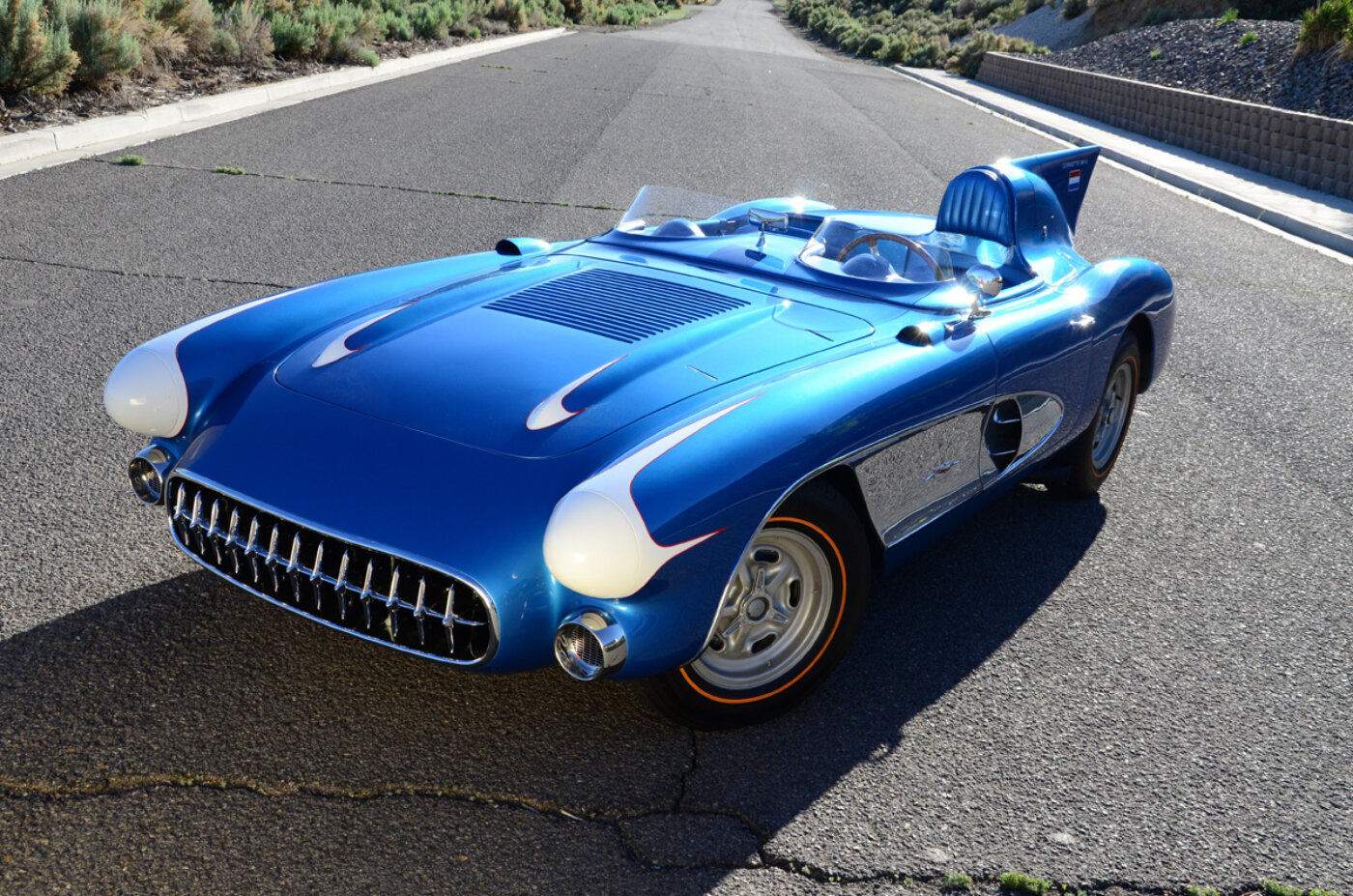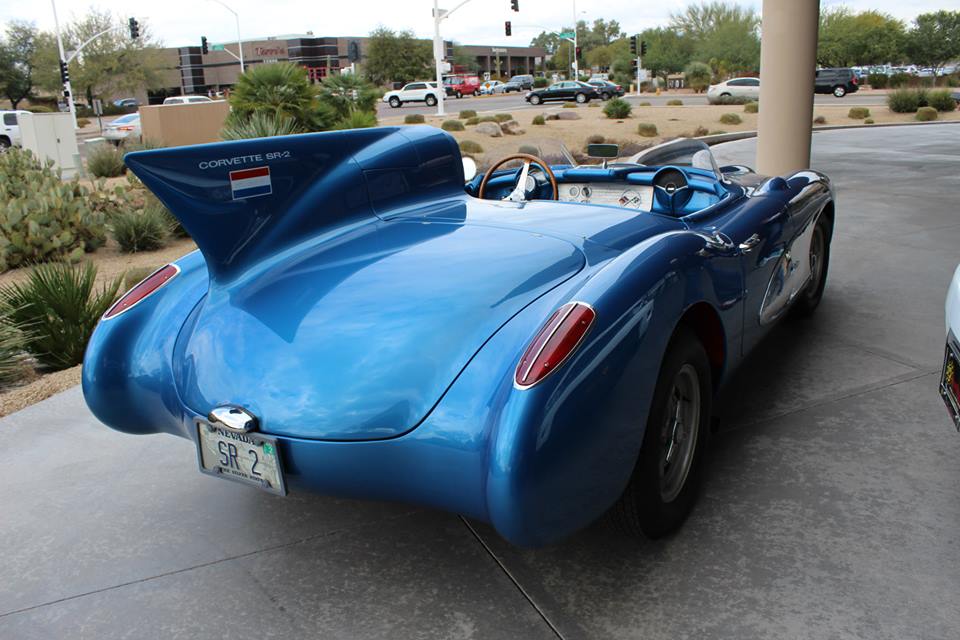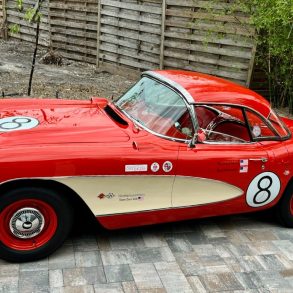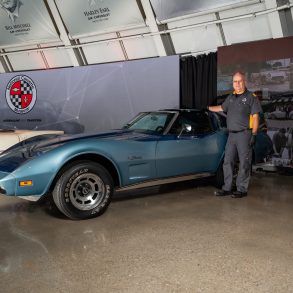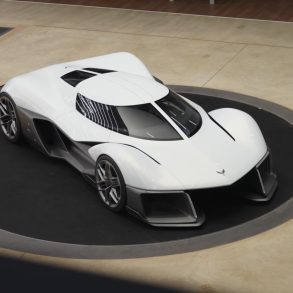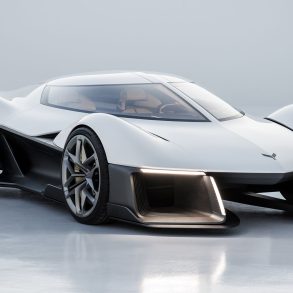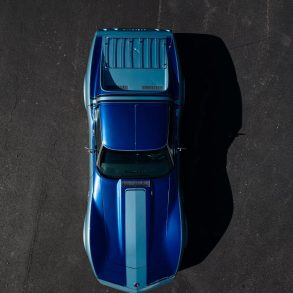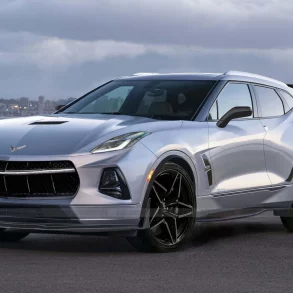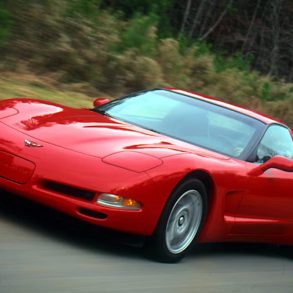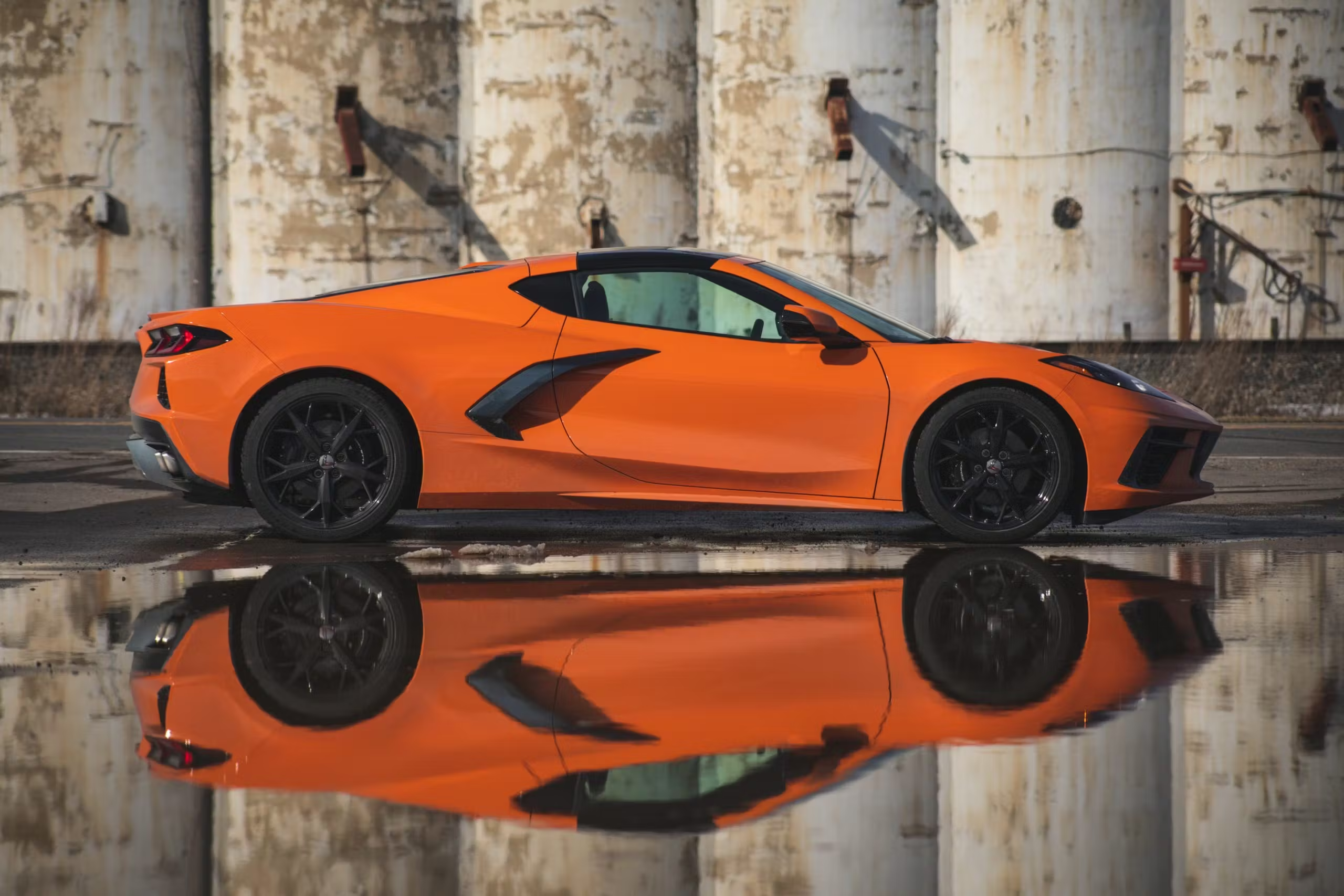Earlier this summer, I was visiting the National Corvette Museum in Bowling Green, Kentucky and was pleasantly surprised to discover that Harley Earl’s SR-2 Sebring Racer was on display there. I was surprised by the comments people were making at the display how few seemed to know the history of this iconic race car and the significance of the role it played in the evolution of the Corvette. It led me to revisit a piece I’d written on the 1956 Corvette SR-2 Sebring Racer for my book “Corvette Concept Cars: Developing America’s Favorite Sports Car” and to share of this car’s rich history here.
The Evolution of the Corvette SR-2 Sebring Racer
The 1956 Corvette SR-2 Sebring Racer was one of the last Corvette concept cars developed under the leadership of (then) GM vice president of design, Harley J. Earl. Although far less recognizable than many of the Corvettes which followe it, the SR-2 was still a respected race car in its own right,and it was the precursor of the Corvette SS, a purpose-built race car originally envisioned by Earl, and later fully realized by Zora Arkus-Duntov. The future success of the SR-2 and the Corvette SS on (and off) the racetrack would catapult the first-generation Corvette onto the world automotive racing stage.
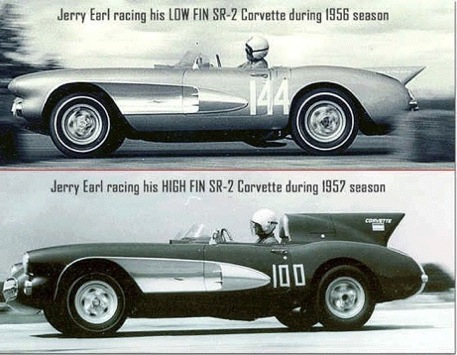
Harley Earl first has the SR-2 commissioned for his son Jerry. Following in his father’s footsteps, Jerome (Jerry) Earl had discovered a passion for cars and for auto racing early in life. When he announced his intention to compete at Sebring during the 1956 racing season, driving a Ferrari 250 MM no less, his father stepped in and instead appointed GM automobile designer Robert Cumberford to design a Corvette race car for his son to drive.
The first SR-2 (there were two additional versions that would succeed it) was developed atop the chassis of a 1954 production model Corvette (car #2522) which Earl had pulled off the St. Louis assembly line solely for the purpose of building this unique racer. The car was shipped to the GM Design Center in Warren, Michigan, along with shop order #90090 which stated the car was to receive “racing modifications and cosmetic additions.”
The Corvette SR-2 featured an extended front end with a more aggressive looking grille framed by a pair of driving/fog lights and sculpted fiberglass fairings that replaced the factory headlights. Its original hood was also replaced with a custom unit that featured a pair of raised ridges and a large, central vent. Further back, two small racing windscreens replaced the factory windshield. A pair of functional air scoops were incorporated into the rear section of the bodyside coves, and a centrally located, low-hung tailfin was mounted atop the rear deck assembly. The car was painted metallic blue and accented with bright aluminum bodyside coves.
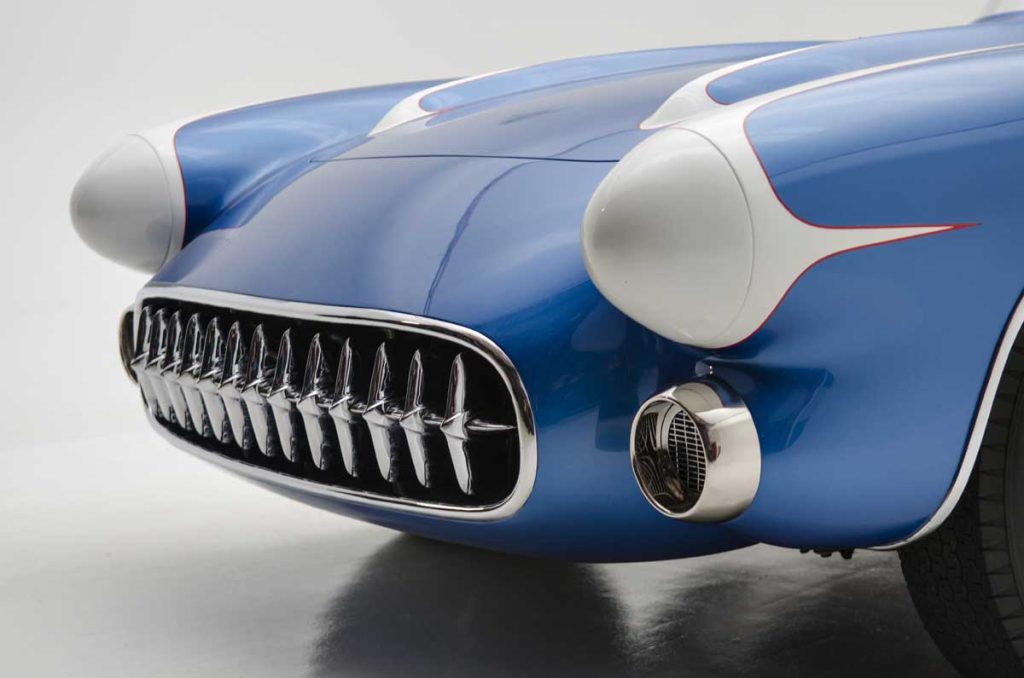
Beneath it’s custom hood, a 265 cubic-inch V8 equipped with dual four-barrel carburetors and a Duntov camshaft provided power to the SR-2 Corvette. The engine was paired to a three-speed manual transmission. The SR-2 benefited from the installation of heavy-duty suspension components previously evaluated by expert driver John Fitch during testing of his original SR racers at Sebring in March 1956. At its corners, the car was equipped with four-wheel drum brakes with “Cerametallic” (ceramic-metallic) brake linings and Halibrand mag wheels.
At the Racetrack
Earl’s SR-2 Corvette race car was completed and was ready for trial runs by mid-June 1956. It was registered with the Sports Car Club of America later that same month and was officially designated SCCA Car No. 144. The car was then shipped to Elkhart Lake, Wisconsin where it made its inaugural run on June 24 at the “June Sprints at Road America.” Jerry Earl was the first to drive the car at Road America, though only briefly. Unaccustomed to the power and handling of the SR-2, Earl lost control of the car during his first practice session, and lost control of the car, causing it to spin out uncontrollably. Fortunately, neither he nor the car sustained any damage.
Dr. Dick Thompson, a dentist and professional driver who had caught the attention of Zora Arkus-Duntov while racing his production Corvette in SCCA sanctioned events, stepped in to pilot the SR-2 racer at Road America. Even with his considerable experience behind the wheel, Thompson struggled to pilot the car around the track. He acknowledged that the car showed enormous potential, but also noted that it felt excessively heavy and lacked the necessary braking power to handle the rigors of the racecourse.
Thompson ended up finishing in 16th place overall.
Despite Thompson’s criticisms of its weight and braking limitations, the SR-2 Corvette continued to compete at select SCCA events throughout the remainder of the 1956 and 1957 racing seasons, most often with Jerry Earl behind the wheel. Earl achieved a career best 5th place finish in the SR-2 at the SCCA Milwaukee Regionals. Stock car driver Buck Baker piloted the SR-2 to a second-place finish at the 1957 Daytona Speed Weeks in the flying mile, achieving an averaged top speed of 152.86 miles per hour.


